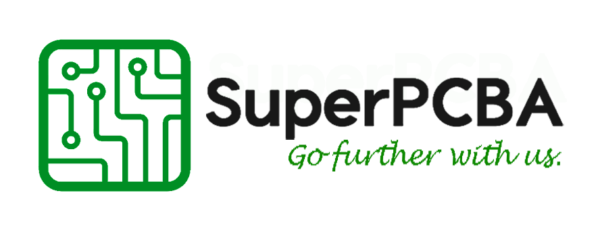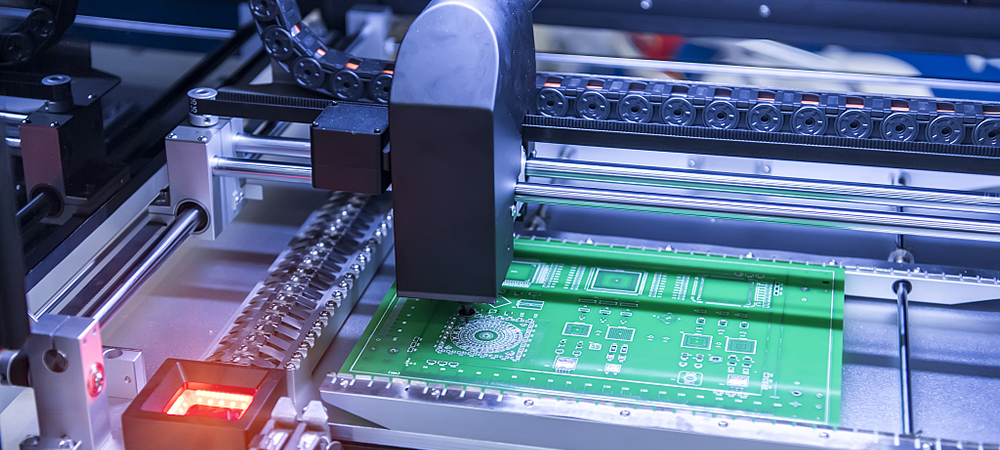1 Introduction
Nowadays, the development of high-end industries cannot be separated from the development of small electronic devices. As the carrier of small electronic components, the performance and production efficiency of printed circuit boards will greatly affect the development of high-tech industries in various countries around the world. How to miniaturize, precisionize, and improve the performance of electronic products, as well as how to achieve highly automated production of printed circuit boards, has become a new challenge that the world needs to face together.
2. PCB Overview
PCB, also known as a printed circuit board, refers to the use of chemical methods to create conductive lines and metalized holes on the surface and inside of an insulating substrate according to the designed circuit. It is the support body that carries various electronic components and the carrier for various electronic components to achieve electrical interconnection. If electronic components are soldered onto the printed wiring board, the resulting board is called a printed circuit board (PCB). In daily life, printed wiring boards and printed circuit boards are often not strictly distinguished and are collectively referred to as printed circuit boards.
3. PCB Manufacturing Steps
Please refer to our another article in below link.
4. The Advantages of Using Automated PCB Assembly Processes
Automated PCB assembly processes offer several advantages over manual assembly processes, including:
- Improved accuracy and consistency: Automated assembly processes use machines and robots to place components on the PCB, which ensures that each component is placed accurately and consistently. This is because machines and robots are not subject to human error, such as hand tremors or fatigue, which can affect the accuracy and consistency of manual assembly processes. Automated assembly processes also use advanced vision systems and sensors to detect and correct any errors in component placement, which further improves the accuracy and consistency of the assembly process.
- Increased speed and efficiency: Automated assembly processes can place components on a PCB much faster than manual assembly processes. This is because machines and robots can work continuously without the need for breaks or rest, which reduces the time required to assemble a PCB. Automated assembly processes can also perform multiple tasks simultaneously, such as placing components and soldering them, which further increases the speed and efficiency of the assembly process.
- Reduced labor costs: Automated assembly processes require less labor than manual assembly processes, which can significantly reduce labor costs. This is because machines and robots can perform tasks that would otherwise require human labor, such as component placement and soldering. Automated assembly processes also require less supervision and training than manual assembly processes, which further reduces labor costs.
- Improved quality control: Automated assembly processes can be programmed to perform quality control checks during the assembly process, which helps to identify and correct any errors or defects before the PCB is completed. This is because machines and robots can perform tasks such as component inspection and testing, which can detect any errors or defects in the assembly process. Automated assembly processes can also record data on the assembly process, which can be used to identify and correct any issues that arise during the assembly process.
- Greater flexibility: Automated assembly processes can be easily reprogrammed to accommodate changes in the design or components of the PCB, which provides greater flexibility in the assembly process. This is because machines and robots can be programmed to perform different tasks and accommodate different components, which allows for greater customization and flexibility in the assembly process. Automated assembly processes can also be easily adapted to accommodate changes in production volume, which allows for greater scalability in the assembly process.
5. Deficiencies in the Existing Automated Production Lines for PCB
- There is still room for improvement in the degree of automation, which does not meet the direction of future technological development. Although a large number of specialized equipment such as cutting machines, polishing machines, exposure machines, AOI inspection equipment, drilling machines, air drying machines, cleaning machines, screen printing machines, placement machines, and reflow soldering machines are used in the entire production line, manual processing methods are still used between processes, such as manual handling of copper-clad boards, etc. There is still a lot of room for improvement in the degree of automation of the printed circuit board production line.
- The chemical etching process is cumbersome and polluting, which does not meet the requirements of green production. A lot of work is required in the pre- and post-etching stages, such as pasting photosensitive dry film, exposing the film, developing on the copper foil, and removing the film after etching, which is very cumbersome. At the same time, the waste liquid generated after etching and film removal is highly polluting. If not properly treated, it will have a significant negative impact on the surrounding environment and the personal health of operators.
- Ordinary reflow soldering has significant deficiencies and cannot meet the needs of high-precision soldering. Ordinary reflow soldering is usually carried out in a reflow oven, which does not have precise closed-loop temperature control. The solder joints that have gone through the reflow oven often have many problems such as poor wettability, incompleteness, and desoldering, resulting in poor solder joint quality and inability to meet the requirements of high-performance circuit boards. Moreover, the reflow oven consumes a huge amount of energy, and it will consume a lot of energy during the startup and use process, resulting in high costs and significant environmental pollution.”
6. Optimization Direction for Automated Production Lines of PCB
- Build a circular conveyor system and use Automatic Guide Vehicles (AGVs) with mechanical arms to replace manual material handling. AGVs have four significant advantages: high flexibility, which allows for flexible changes, corrections, and expansion of the moving route according to different needs; real-time monitoring and control, which can be adjusted promptly when the operation plan changes; safety and reliability, as AGVs are usually controlled by microprocessors, can communicate with controllers, have low operating speeds, high positioning accuracy, and safety protection devices, and are easy to maintain. The combination of the circular conveyor system and AGVs can replace manual material handling in the production of printed circuit boards, which can not only reduce labor costs but also shorten the production cycle and significantly improve the degree of automation of the printed circuit board production line.
- Maintain other processes unchanged and use laser etching instead of chemical etching, and use laser reflow soldering equipment instead of ordinary reflow ovens. Omit steps such as pasting photosensitive dry film, exposing the film, developing on the copper foil, and removing the film after etching, and directly use lasers to etch the copper surface. This can not only shorten the production process and reduce production costs but also lasers are clean energy sources that do not produce harmful substances that are harmful to the environment and human body, which meets the requirements of economic and environmental friendliness of automated manufacturing systems. As ordinary reflow ovens have some shortcomings, laser reflow soldering equipment can be considered as a replacement. Laser soldering has many advantages, such as local heating, which avoids damage to thermal-sensitive components caused by thermal shock, non-contact soldering, which does not produce contact stress and can ensure the integrity of the circuit board surface; clean energy, which consumes less energy than ordinary reflow ovens. At the same time, to achieve precise temperature control, a fuzzy PID closed-loop control algorithm can be introduced. To further improve the soldering accuracy, the Hough transform can be used to complete the image calibration of feature solder joints, and the Faster R-CNN object detection algorithm can be used to achieve automatic defect detection of solder joints, thereby repairing the defective solder joints.
7. Conclusion
High automation, efficiency, quality, and cleanliness are the future development directions of automated production lines for printed circuit boards. This article introduces the existing production processes of printed circuit boards and proposes the optimization direction of automated production lines for printed circuit boards, providing effective references for the production of printed circuit boards.



